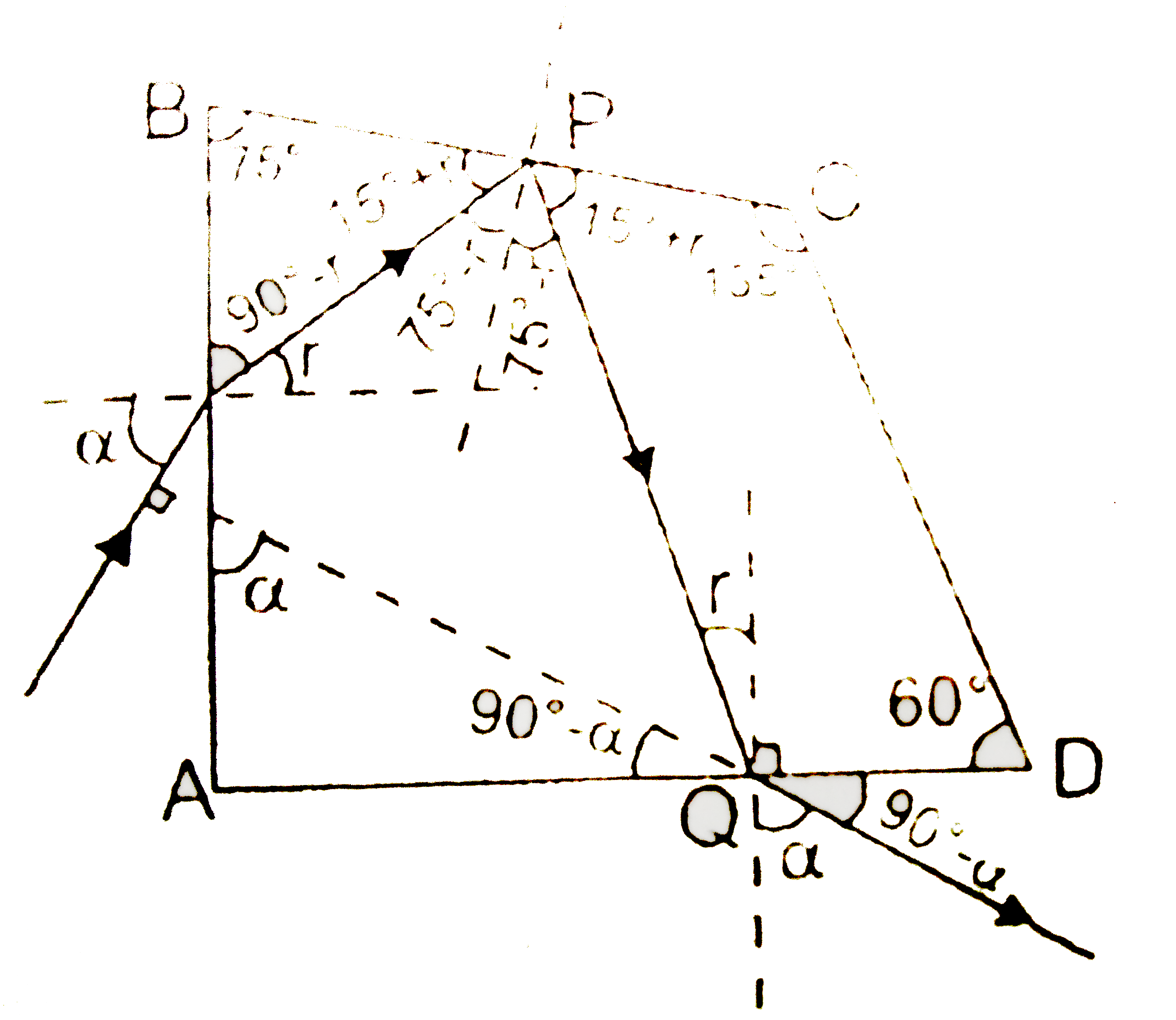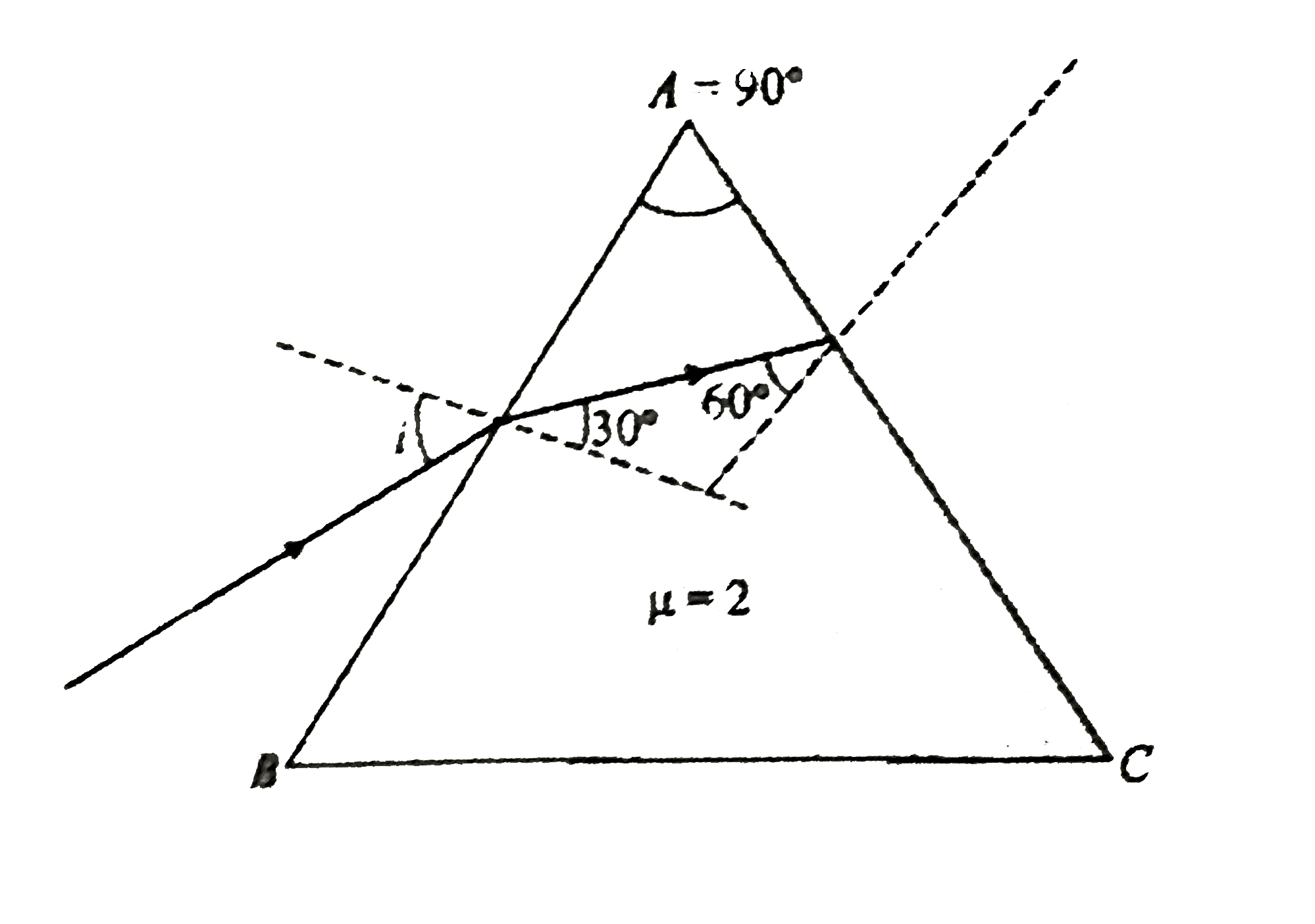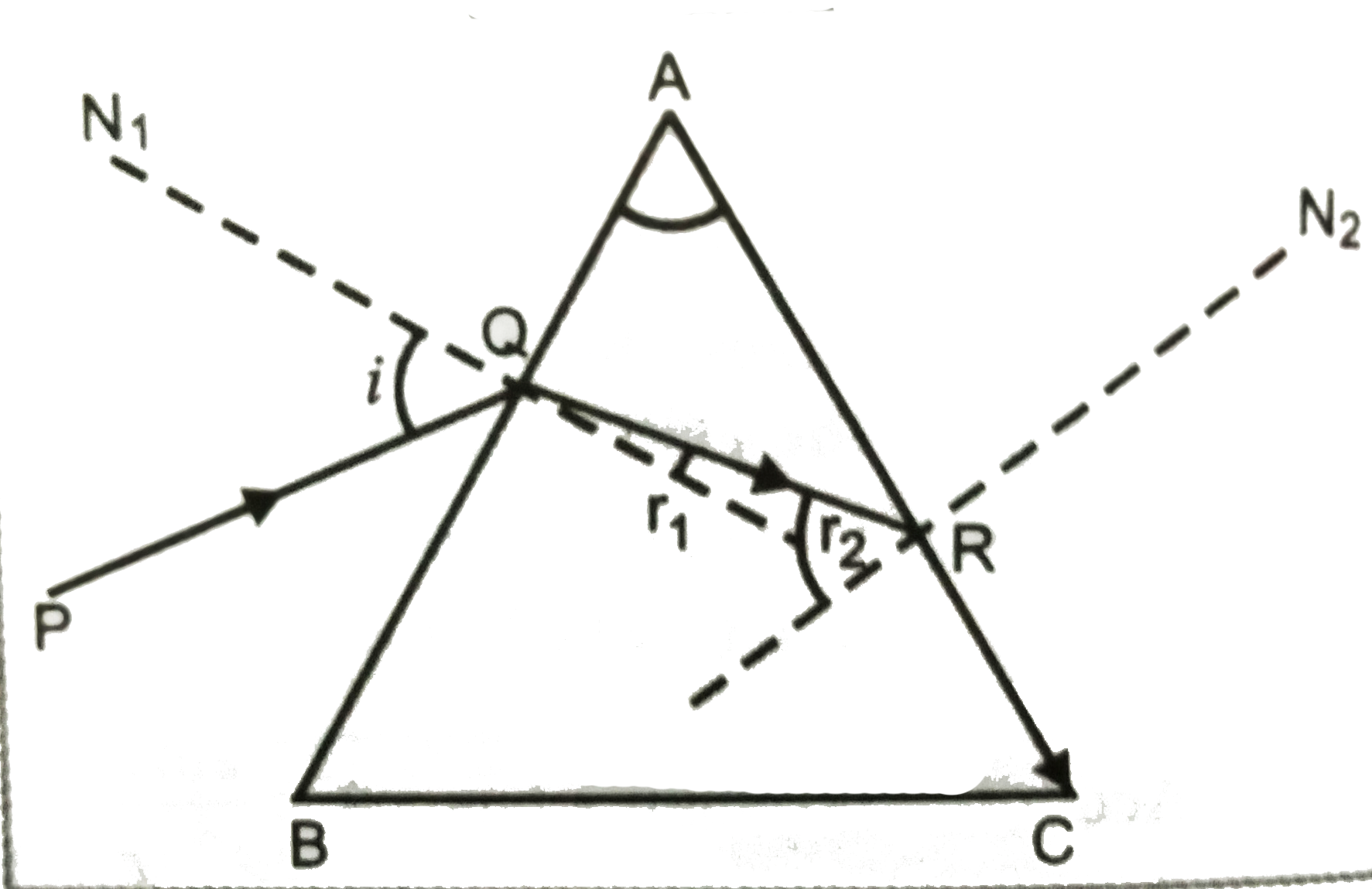In the given figure, the faces of prism ABCD made of glass with a refractive index n form dihedral angles ∠A=90∘,∠B75∘,,∠C=135∘&∠D=60∘ (The Abbe's prism) .A beam of light falls on face AB & after total internal reflection from face BC escapes through face AD.Find the range of n and angle of incidence α of the beam onto face AB, if a beam that has passed through the prism in this mahner is perpedicular to the incident beam.

The correct Answer is:√2<n<2,and45∘<α≤90∘
For the figure since incidence angle at face AB is α and refraction angle is r , condition that emergent ray is perpndicular to incidence ray ⇒ angle of emergence at face QD is α
⇒ incidence angle at face QD is r.
In quadrlateral PQDC15∘+r+135∘+r+90=180∘
Now, 75∘−r=45∘>c⇒1√2>(10n⇒n>√2
Also, sinα=nsinr=nsin30∘=n2
⇒n=2sinα⇒n2≤1⇒n≤2
∴√2≤n≤2 and sinαsinr=n⇒√2≤'2sinα≤2
⇒(1)√2)<sinα≤1⇒45∘<α≤90∘.

Topper's Solved these Questions
Similar Questions
In figure shown find the angle of incidence of the light ray on face AB of the prism for which light will reach face AC at incidence angle 60∘.

[90∘]
View SolutionA ray of light enters the face AB of a glass prism of refractive index μ at an angle of incidence i. Find the value of i such that no ray emerges from the face AC of the prism, given angle of prism is A.
View Solution
Knowledge Check
Light enters an isosceles right triangular prism at normal incidence through face AB and undergoes total internal reflection at face BC as shown below.
The minimum value of the refractive index of the prism is close to
 A1.10B1.55C1.42D1.72
A1.10B1.55C1.42D1.72A ray of monochromatic light is incident on the refracting face of a prism (angle 75∘0 . It passes through the prism and is incident on the other face at the critical angle. If the refractive index of the prism is √2 , then the angle of incidence on the first of the prism is
A15∘B30∘C45∘D60∘Monochromatic light is incident on a glass prism of angle A. If the refractive index of the material of the prism is μ, a ray, incident at an angle θ, on the face AB would get transmitted through the face AC of the prism provided:
 Aθ>cos−1[μsin(A+sin−1(1μ)]Bθ<cos−1[μsin(A+sin−1(1μ)]Cθ>sin−1[μsin(A−sin−1(1μ)]Dθ<sin−1[μsin(A−sin−1(1μ)]
Aθ>cos−1[μsin(A+sin−1(1μ)]Bθ<cos−1[μsin(A+sin−1(1μ)]Cθ>sin−1[μsin(A−sin−1(1μ)]Dθ<sin−1[μsin(A−sin−1(1μ)]
A ray of light the face AB of a glass prism of refractive index μ at an angle of incidence i. Find the value of i such that no ray emerges from the face AC of the prism. Given angle of prism is A.

View SolutionA ray of light incident normally on the first face of a glass prism of refractive index 1.6 just emerges from the other face. Find the angle of the prism.
View SolutionA ray of light is incident on the face AB of a glass prism ABC having vertex anlge A equal to 30∘. The face AC is silvered and a ray of light incident on the face AB retraces its path. If the refractive index of the material of prism is √3 find the angle of incidence on the face AB.
View SolutionA ray of monochromatic light is incident on the refracting face of a prism (angle 75∘0 . It passes through the prism and is incident on the other face at the critical angle. If the refractive index of the prism is √2 , then the angle of incidence on the first of the prism is
View SolutionMonochromatic light is incident on a glass prism of angle A. If the refractive index of the material of the prism is μ, a ray, incident at an angle θ, on the face AB would get transmitted through the face AC of the prism provided:

View Solution
